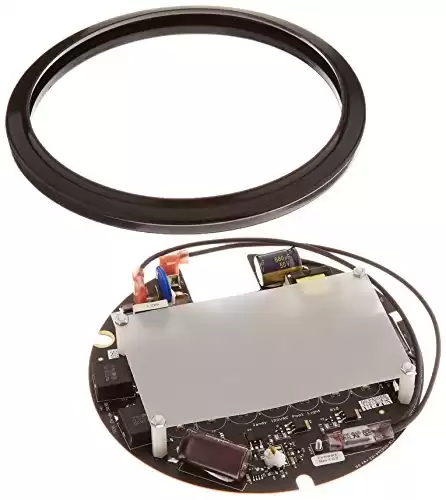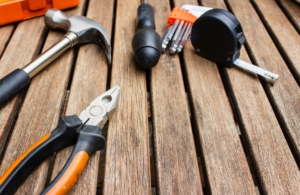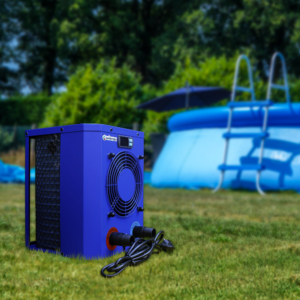Common Issues with Pool Lights: Troubleshooting Guide and Solutions
Having pool lights enhances your pool’s aesthetic appeal and provides safety and functionality, especially during nighttime swims or poolside gatherings. However, like any electrical component, pool lights can experience various issues over time. This blog will discuss the most common problems pool owners face with pool lights and provide a comprehensive troubleshooting guide and practical solutions to address them.
Common Issues with Pool Lights
Pool lights can encounter problems due to regular wear and tear, improper installation, or environmental factors.
Common issues with pool lights can include:
- Bulb Failure: Pool lights use specialized bulbs that are designed for underwater use. Over time, these bulbs can burn out or become damaged, resulting in a loss of light.
- Water Leakage: Pool lights are typically sealed to prevent water from entering the fixture. However, if the seal becomes compromised or damaged, water can leak in, causing electrical issues and potentially damaging the light.
- Corrosion: The presence of water and chemicals in the pool environment can lead to corrosion of the light fixture and its components. Corrosion can affect the electrical connections and cause the light to malfunction or stop working altogether.
- Wiring Problems: Pool lights are connected to the electrical system through wiring, and issues can arise if there are problems with the wiring connections. Loose connections, damaged wires, or faulty junction boxes can lead to flickering lights, intermittent operation, or complete failure.
- Transformer Issues: Pool lights often require a transformer to convert the electrical voltage to a suitable level for the light. Problems with the transformer, such as overheating, voltage fluctuations, or failure, can affect the performance of the pool light.
- Control System Malfunction: Some pool lights can be operated and controlled through a separate control system. Issues with the control system, such as faulty switches, malfunctioning remote controls, or programming errors, can impact the functionality and operation of the pool light.
- Poor Installation: Improper installation of pool lights can lead to various issues. Incorrect wiring, inadequate sealing, or insufficient grounding can cause problems with the light’s performance and longevity.
- Age and Wear: Like any electrical equipment, pool lights can degrade over time due to age and wear. Components may deteriorate, and connections may loosen, resulting in diminished or erratic light output.
Common Issues with Pool Lights: Bulb Failure
A burnt-out or faulty bulb is a frequent issue encountered with pool lights. Here, we will discuss the signs of a bulb failure, potential causes, and steps to replace a pool light bulb.
Signs of Bulb Failure:
1. Dim or no light output from the pool light.
2. Visible cracks or discoloration on the bulb.
3. Pool light flickering or intermittent lighting.
Causes of Bulb Failure:
1. Excessive heat buildup within the fixture.
2. Water infiltration leading to short-circuits.
3. Age and general wear of the bulb.
Replacing a Pool Light Bulb:
1. Ensure the power to the pool lights is turned off.
2. Remove the pool light fixture from its housing.
3. Identify the bulb type and wattage.
4. Replace the bulb following the manufacturer’s instructions.
5. Reinstall the fixture and test the new bulb.
Common Issues with Pool Lights: Water Leakage
Water leakage in pool lights can pose serious safety risks and damage the electrical components. Let’s explore the indications of water leakage, potential causes, and steps to fix this issue.
Indications of Water Leakage:
1. Pool light flickering or turning off when the fixture is submerged.
2. Visible water droplets inside the pool light fixture.
3. Corrosion or rust on the exterior of the fixture.
Causes of Water Leakage:
1. Damaged or worn-out seals around the pool light fixture.
2. Cracks or gaps in the housing due to aging or improper installation.
Fixing Water Leakage in Pool Lights:
1. Turn off the power supply to the pool lights.
2. Remove the pool light fixture from its housing.
3. Inspect the seals and gaskets for any damage or wear.
4. Replace damaged seals or gaskets with new ones.
5. Apply a silicone-based sealant around the fixture to ensure a watertight seal.
6. Reinstall the fixture, ensuring proper alignment and tightening.
Common Issues with Pool Lights: Electrical Problems
Electrical issues with pool lights can range from tripping circuit breakers to dimming or flickering lights. Let’s explore common electrical problems, their potential causes, and troubleshooting steps to identify and resolve them.
Tripping Circuit Breakers or GFCI Outlets:
1. Check for water intrusion or damaged wiring causing short circuits.
2. Inspect the GFCI outlet for any faults or malfunctions.
3. Reset the circuit breaker or GFCI outlet if tripped, but seek professional help if the problem persists.
Dimming or Flickering Lights:
1. Verify that the bulb is properly seated and tightly secured.
2. Inspect the wiring connections for loose or damaged wires.
3. Check the transformer or power supply for proper voltage output.
4. If necessary, replace the bulb, wiring connections, or faulty transformer.
Common Issues with Pool Lights: Corrosion and Rust
Corrosion and rust are common issues with pool lights, especially in areas with high humidity or saltwater pools. Let’s explore the causes of corrosion and rust, signs of damage, preventive measures, and steps to address existing issues.
Causes of Corrosion and Rust in Pool Lights:
1. Exposure to chemicals or saltwater.
2. Improper grounding or electrical connections.
3. Poor-quality materials used in the pool light construction.
Signs of Corrosion or Rust Damage:
1. Visible rust or corrosion on the exterior of the pool light fixture.
2. Dim or flickering lights due to compromised electrical connections.
Preventing Corrosion:
1. Choose pool lights specifically designed for corrosive environments.
2. Regularly clean and inspect the pool light fixtures.
3. Apply a protective coating or sealant on the fixture’s exterior.
Addressing Corrosion or Rust Issues:
1. Turn off the power supply to the pool lights.
2. Remove the corroded or rusted parts of the fixture.
3. Clean the affected areas with a wire brush or sandpaper.
4. Apply an anti-corrosion coating or rust-resistant paint.
5. Replace any severely damaged parts or the entire fixture if necessary.
Common Issues with Pool Lights: Color Changing or Programmable Lights
Color-changing or programmable pool lights can encounter issues related to changing colors or light patterns. Let’s explore the potential problems, troubleshooting steps, and options for resetting or reprogramming these lights.
Issues with Changing Colors or Light Patterns:
1. Lights getting stuck on a particular color or pattern.
2. Lights not responding to remote control commands.
Troubleshooting Steps for Malfunctioning Color-Changing Lights:
1. Check the remote control batteries and replace if necessary.
2. Verify the remote control’s signal range and proximity to the lights.
3. Reset the lights to their default settings according to the manufacturer’s instructions.
4. Ensure the lights are receiving power and are correctly wired.
Resetting or Reprogramming Options:
1. Consult the manufacturer’s manual for specific reset instructions.
2. Use a master reset function, if available, to restore default settings.
3. Reprogram the lights following the manufacturer’s guidelines or seek professional assistance if needed.
Tips for Preventing Pool Light Issues
Taking proactive measures to prevent pool light issues can save you time, money, and potential safety hazards.
Regular Maintenance and Inspection:
1. Clean the pool light fixtures regularly to remove debris or buildup.
2. Inspect the seals, gaskets, and wiring connections for any signs of wear or damage.
3. Schedule professional maintenance checks annually.
Proper Installation and Wiring Techniques:
1. Hire a licensed electrician experienced in pool light installation.
2. Ensure the wiring is correctly grounded and waterproofed.
Choosing High-Quality Pool Lights:
1. Invest in pool lights from reputable manufacturers.
2. Consider lights specifically designed for the pool environment.
Protecting Pool Lights During Winter or Off-Season:
1. Remove the pool lights for storage during winter or when not in use.
2. Store the lights in a dry and temperature-controlled environment.
When to Call a Professional
While DIY troubleshooting and repairs can address many pool light issues, some situations require professional assistance. Let’s explore when it’s advisable to call a licensed electrician or pool technician:
Identifying Situations Requiring Professional Assistance:
1. Persistent electrical problems or tripping breakers.
2. Extensive water leakage or damaged wiring.
3. Major corrosion or rust issues.
Benefits of Hiring
a Licensed Electrician or Pool Technician:
1. Expert knowledge and experience in pool light repairs.
2. Compliance with electrical and safety regulations.
3. Proper diagnosis and resolution of complex issues.
Safety Considerations and Risks of DIY Repairs:
1. Pool lights involve electrical components, posing a risk of electrical shock or fire.
2. Incorrect repairs may void warranties or cause further damage.
Here are the top 10 frequently asked questions (FAQs) about common issues with pool lights, along with their answers:
1. Q: Why is my pool light not working?
A: There could be several reasons for a pool light not working, such as a burnt-out bulb, electrical problems, water leakage, or wiring issues. It’s essential to troubleshoot the problem systematically to identify the exact cause.
2. Q: How often do pool light bulbs need to be replaced?
A: Pool light bulbs typically have a lifespan of around 3,000 to 5,000 hours. However, factors like usage frequency and environmental conditions can affect their longevity. It’s recommended to inspect and replace pool light bulbs every 2-3 years or as needed.
3. Q: Can I replace a pool light bulb myself, or do I need professional help?
A: If you have basic knowledge of electrical work and follow safety precautions, you can replace a pool light bulb yourself. However, if you’re unsure or uncomfortable with the process, it’s best to hire a licensed electrician or pool professional to ensure proper installation.
4. Q: How do I fix water leakage in my pool lights?
A: Water leakage in pool lights is often caused by damaged or worn-out seals. To fix it, you’ll need to turn off the power, remove the fixture, inspect and replace the seals or gaskets, and apply a silicone-based sealant before reinstalling the fixture.
5. Q: Why are my pool lights flickering or dimming?
A: Flickering or dimming pool lights can be attributed to loose wiring connections, a faulty transformer, or power supply issues. Carefully inspecting and tightening the connections, replacing damaged components, or adjusting the transformer can help resolve this problem.
6. Q: What causes corrosion and rust in pool lights?
A: Corrosion and rust in pool lights can occur due to exposure to chemicals, saltwater, or poor-quality materials used in the fixture construction. Regular maintenance, proper grounding, and choosing corrosion-resistant lights can help prevent these issues.
7. Q: Can I use regular light bulbs in my pool lights?
A: No, regular light bulbs are not suitable for pool lights. Pool light bulbs are specially designed to withstand water exposure, chemicals, and the high humidity of pool environments. Using regular bulbs can lead to safety hazards and premature failures.
8. Q: How do I reset my color-changing pool lights?
A: Resetting color-changing pool lights typically involves following the manufacturer’s instructions. It may involve turning off the power, pressing specific buttons on the control panel or remote, or using a master reset function, if available.
9. Q: Are there any safety precautions I should take when working on pool lights?
A: Yes, safety is paramount when working on pool lights. Always turn off the power supply, use insulated tools, wear appropriate protective gear, and follow proper electrical safety guidelines. If unsure or uncomfortable, it’s best to consult a professional.
10. Q: How can I prevent pool light issues in the future?
A: Regular maintenance and inspection, proper installation, choosing high-quality pool lights, and protecting the lights during the off-season can help prevent future pool light issues. Additionally, addressing any minor problems promptly can help avoid major complications.
Remember, if you have specific concerns or encounter complex issues with your pool lights, it’s recommended to seek professional assistance from a licensed electrician or pool technician.
Conclusion: Common Issues with Pool Lights
Pool lights are great for enhancing the ambiance and safety of your swimming pool. You can maintain a well-lit and enjoyable pool environment by familiarizing yourself with common pool light issues and their troubleshooting solutions. Regular maintenance, prompt repairs, and professional assistance, when needed, will ensure the longevity and functionality of your pool lights, providing you with many unforgettable swimming experiences.
Some of our recommendations for replacement pool lights:
| Product Image | Product Name / Price / Primary Button |
|---|---|














